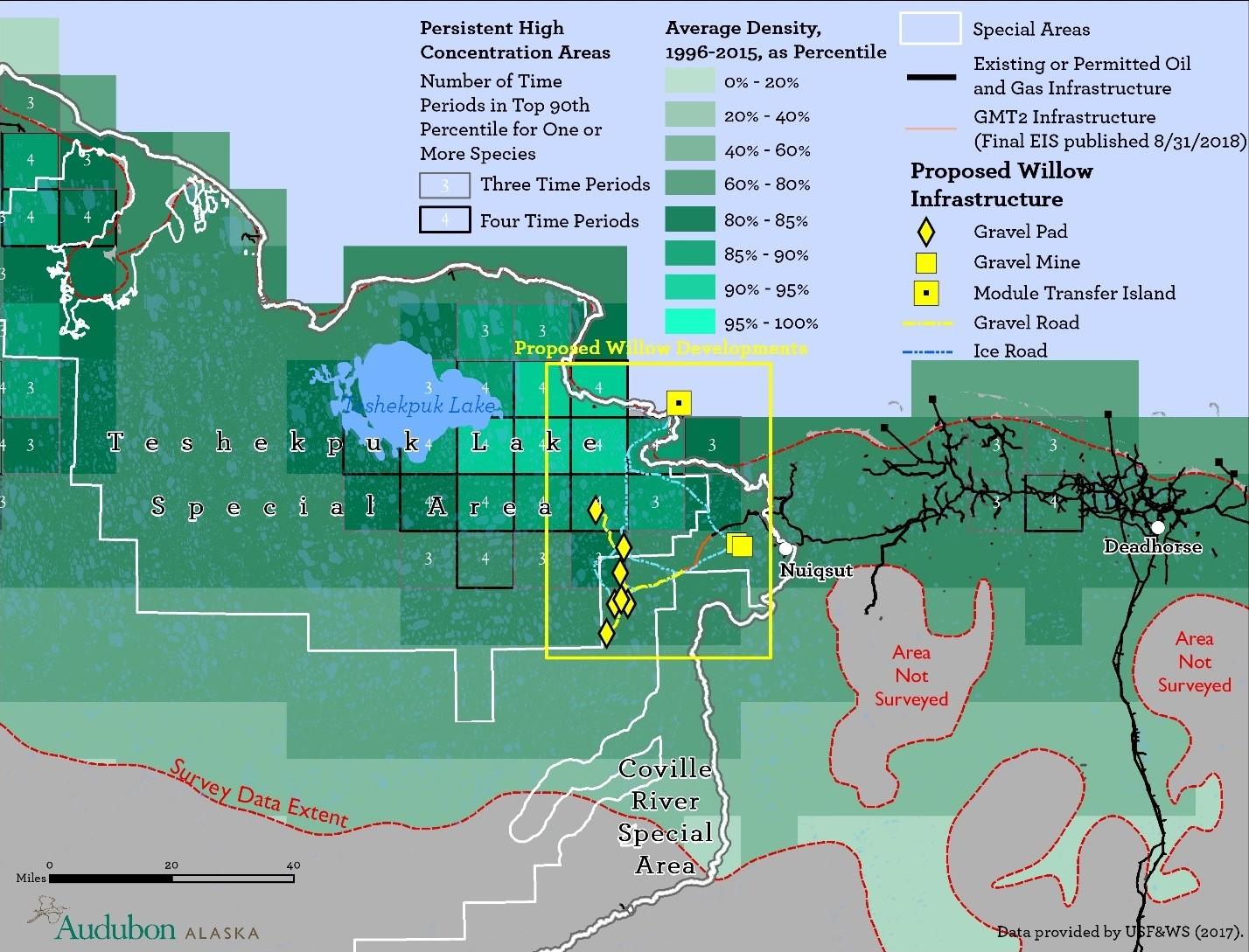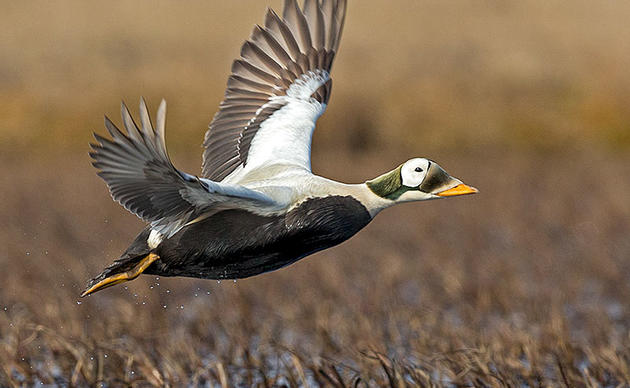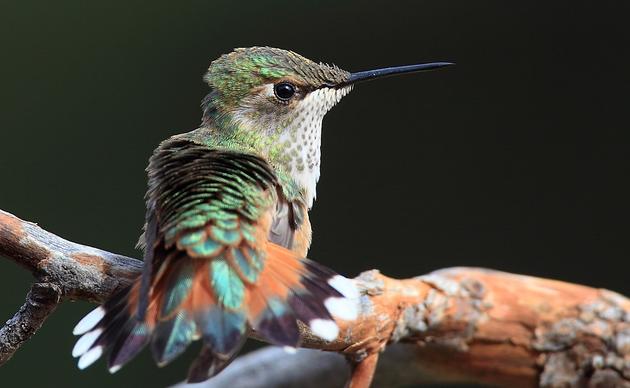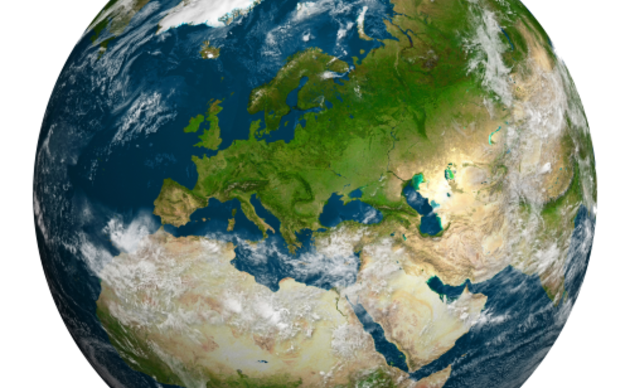This major oil project in the Western Arctic raises major questions for birds and wildlife
Audubon Alaska is keeping a close eye on oil development in Alaska’s Arctic, including on publicly owned lands in the National Petroleum Reserve–Alaska (NPR–A). The Obama-era land management plan still in place today provides a good balance: it protects irreplaceable habitat in places like Teshekpuk Lake while also letting oil and gas development move forward in other areas. Part of the plan designates a handful of areas for their special biological values, fittingly called “Special Areas”. Now, for the first time ever, the oil industry is proposing to construct permanent gravel roads, drillsites, and pipelines within the boundaries of these Special Areas.
The project proposal in question is called the Willow Master Development Plan. Audubon Alaska recently submitted a technical science comment letter to the Bureau of Land Management outlining our concerns about the Willow Plan. We found this proposed development would raise a number of red flags for whales, caribou, and birds. However, our greatest concern by far is that the Trump Administration has announced it will attempt to use an extremely shortened timeline to analyze this giant project. The globally significant biological resources in the area and the complexity of the issues raised deserve more time and consideration than would be granted from a fast-tracked environmental review period. If oil industry is serious about “responsible” development in Alaska, then a full, honest, and open analysis of the impacts should be the bare minimum before moving past the design phase of such a colossal project.

A giant footprint. Simply put, Willow dwarfs every other development plan in the NPR–A. The handful of drill sites elsewhere in the NPR–A (CD-5, GMT1, and the proposed GMT2) average slightly more than a dozen acres each, not including roads or pipelines. Willow’s proposed footprint? Over 100 acres; bump that up to 525 acres if you count 37 miles of roads and the 115-acre gravel mine they’d need to supply all that material. To put that 525 acres in perspective, that’s about the area of downtown Anchorage. This is enormous, and unprecedented on federal lands in Alaska.
Whales at risk. In the proposed plan, the Willow project would build a Module Transfer Island in Harrison Bay, near the Colville River Delta. Willow would mine hundreds of thousands of cubic yards of gravel, load it onto trucks, drive it out onto the frozen-over Arctic Ocean, cut a gigantic hole, and start dumping. After tens of thousands of truckloads, there’d be a gravel island, jutting out of an otherwise level seafloor. That massive construction effort would occur right in the midst of an important area for seabirds and marine mammals.
The seafloor is too shallow for bowhead whales right at the proposed Module Transfer Island, but they get as close as they can and in staggering abundances – on a single day in 2016, for example, an aerial survey found almost 500 bowhead whales feeding around Harrison Bay. Besides whales, a huge number of birds – mainly loons, eiders, and Long-tailed Ducks – breed nearby and use these waters as foraging areas during breaks in nesting. These species would all be at risk from increased Willow-related vessel traffic and would be exposed to potential toxic chemical spills associated with building, accessing, and using the Module Transfer Island.
Cold considerations for caribou. Most caribou in the other Arctic herds head south to interior Alaska and Canada for the winter. But about 65% of the caribou in the Teshekpuk Caribou Herd actually stick it out on the North Slope. However, we don’t know much about their habits and needs during winter. Up until now, Arctic oil and gas winter activities have occurred in areas where caribou are scarce in winter. The Willow Plan would bring development activity into core Arctic wintering habitat for these Teshekpuk caribou, with unknown consequences. The recklessly fast pace with which the Trump Administration wants to review Willow will simply not give us enough time to consider this new problem.
Persistent bird areas. New analysis from Audubon Alaska is looking into how bird concentrations persist over time in certain areas along the Beaufort Coastal Corridor. The map below shows persistent areas for seaducks: King Eiders, Long-tailed Ducks, and Spectacled Eiders. The more vivid green indicates higher density averaged over 20 years of data (1996-2015). However, this average density might be thrown off by a few abnormal years – for example, if there’s one year when a ton of birds were located in one place for some reason, that one year of unusual data could skew the long-term average towards showing that one place as more important than it usually is. So instead, we also broke down the 20 years of data into four separate 5-year timeframes, and looked at which areas are persistently important for most or all of those time periods. Looking at the map, the squares below with a “3” or a “4” inside indicate the number of those 5-year time periods when that square supports a really high density of birds.
You’ll also see that one of the gravel pads (supporting a drillsite) for Willow would enter an area that is not just important for seaducks, but an area that has been persistently important for seaducks. As Willow brings development closer to the heart of the Teshekpuk Lake area, we need to be clear about the long-term impacts to seaducks, shorebirds, and loons in particular.

Sprawling towards Teshekpuk. Stepping back from the impacts to specific birds and mammals, it’s clear that the Willow Plan would be a major step towards entrenching industrial sprawl towards the Teshekpuk Lake Special Area. Permanent gravel roads, drillpads, and pipelines would creep closer to areas that have received decades of protection due to the area’s immense importance for shorebirds, caribou, waterfowl, polar bears, and many other species. It’s entirely possible that Willow would divert wildlife like caribou from key migration corridors. Future developments linking into Willow’s processing facilities might further besiege the biological values that make Teshekpuk special.
There are a number of new concerns and questions for Arctic birds and other wildlife stemming from the Willow Development Plan. The proposed activities would mostly take place outside of areas unavailable for oil development, but the ecological impacts will certainly be felt over a much larger area. Guaranteeing a robust – and unrushed – planning process is the first, critical step towards ensuring ongoing protection of these critical places and the wildlife that rely on them. It’ll take an ongoing effort, combining our analysis and your support, to keep this development plan honest.



